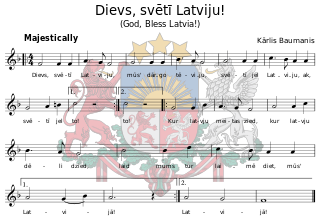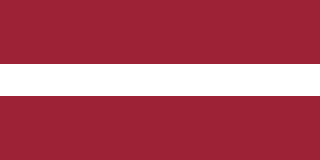 W
W5 lats coin was a Latvian lat coin minted in 1929, 1931 and 1932. It became a popular symbol of independence during the Soviet occupation. It was reproduced in several modern commemorative coins of Latvia and is used on the national sides of the Latvian 1 and 2 euro coins. The reverse design was featured on the 500 lats banknote and in watermarks of all lats banknotes.
 W
WAdalia bipunctata, the two-spot ladybird, two-spotted ladybug or two-spotted lady beetle, is a carnivorous beetle of the family Coccinellidae that is found throughout the holarctic region. It is very common in western and central Europe. It is also native to North America but it has heavily declined in many states and provinces. It is commonly introduced and imported as a biological control agent.
 W
WCoat of arms of Republic of Latvia was officially adopted by the Constitutional Assembly of Latvia on July 15, 1921, and was in official use from August 19, 1921. It was created using new national symbols and elements of coats of arms of Polish and Swedish Livonia and of the Duchy of Courland and Semigallia. Thus the coat of arms combines symbols of Latvian national statehood, as well as symbols of its historical regions. The Latvian national coat of arms was designed by the Latvian artist Rihards Zariņš.
 W
WDievs, svētī Latviju! is the national anthem of Latvia. Created in 1873 as a patriotic song, it did not gain official status until 1920.
 W
WThe national flag of Latvia was used by independent Latvia from 1918 until the country was occupied by the Soviet Union in 1940. Its use was suppressed during Soviet rule. On 27 February 1990, shortly before the country regained its independence, the Latvian government re-adopted the traditional red-white-red flag.
 W
WThe Freedom Monument is located in Riga, Latvia, honouring soldiers killed during the Latvian War of Independence (1918–1920). It is considered an important symbol of the freedom, independence, and sovereignty of Latvia. Unveiled in 1935, the 42-metre (138 ft) high monument of granite, travertine, and copper often serves as the focal point of public gatherings and official ceremonies in Riga.
 W
WSaule, Pērkons, Daugava is a Latvian choir song. The text originates from the poem Daugava by the Latvian poet Rainis, while the musical part is composed by Mārtiņš Brauns.
 W
WThe white wagtail is a small passerine bird in the family Motacillidae, which also includes pipits and longclaws. The species breeds in much of Europe and the Asian Palearctic and parts of North Africa. It has a toehold in Alaska as a scarce breeder. It is resident in the mildest parts of its range, but otherwise migrates to Africa. In Ireland and Great Britain, the darker subspecies, the pied wagtail or water wagtail predominates. In total, there are between 9 and 11 subspecies.